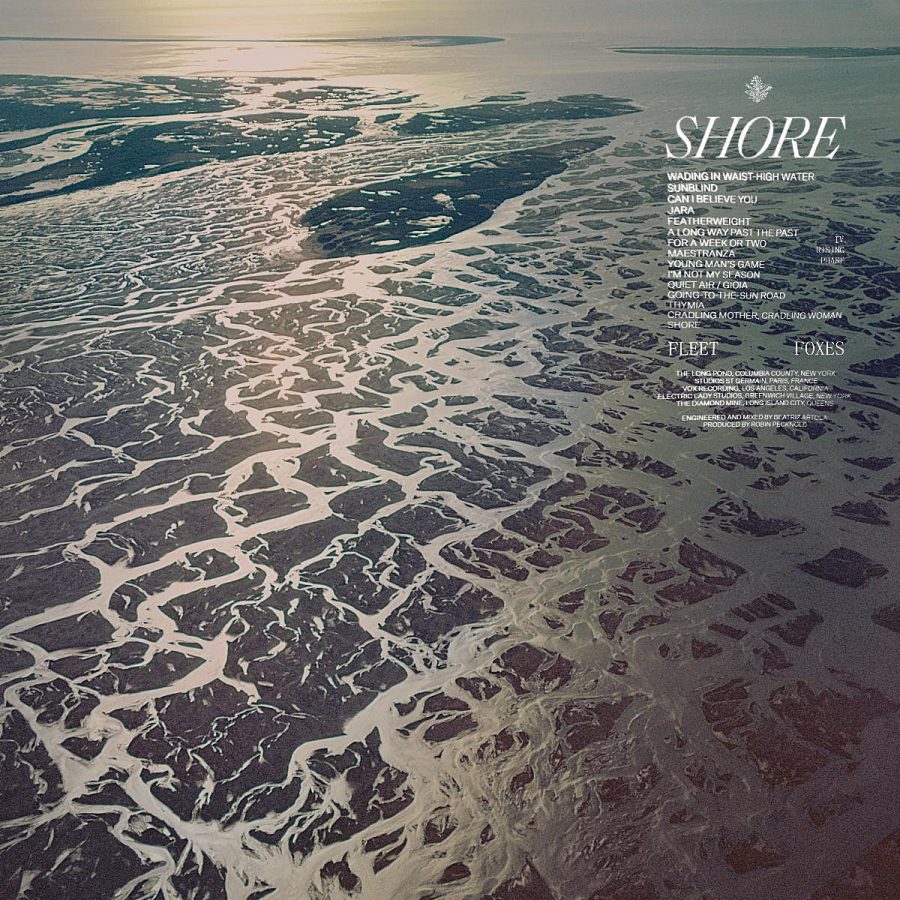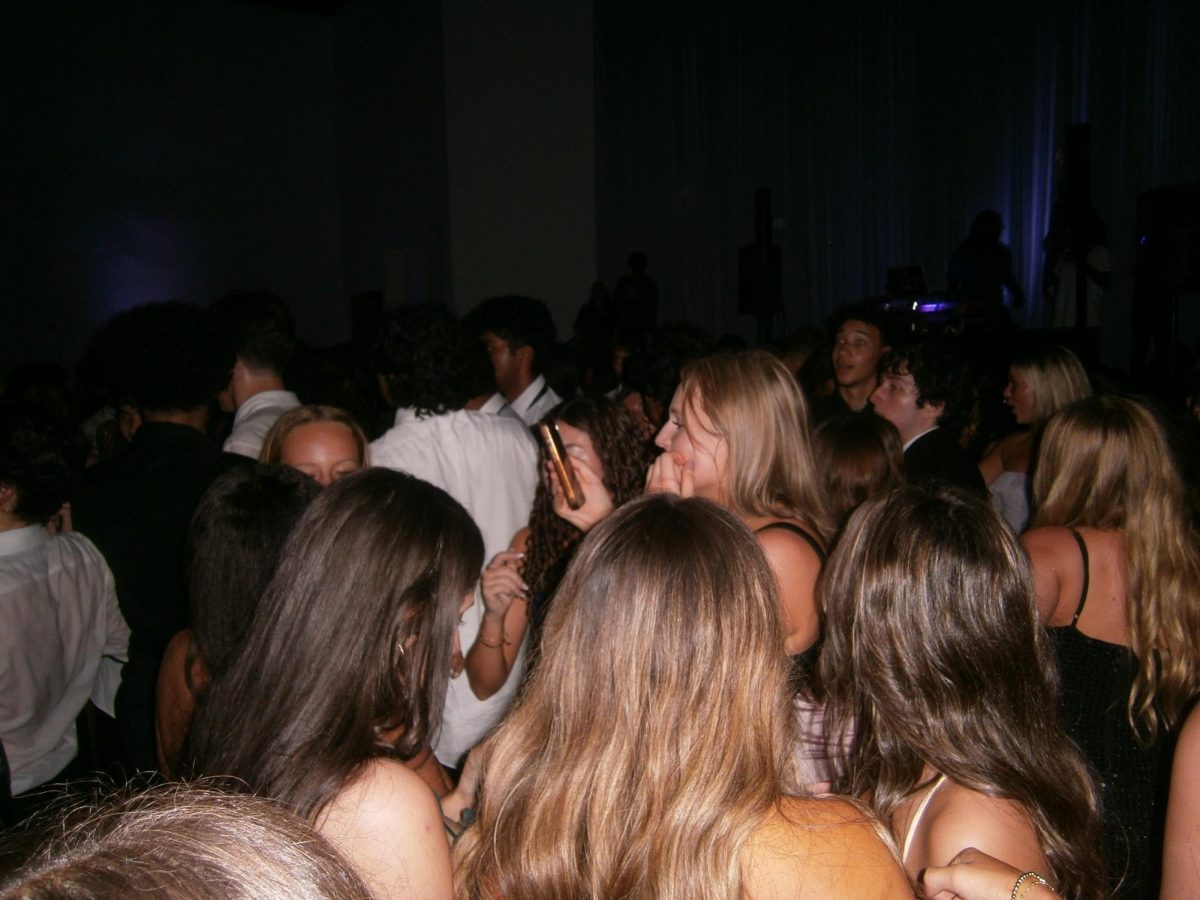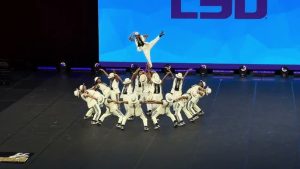Review: Fleet Foxes return with Shore
After a three year silence since 2017’s Crack-Up, Fleet Foxes return for their fourth album
Photo Fleet Foxes
Fleet Foxes’ album cover for “Shore,” their most recent release.
October 7, 2020
A few years back, a stranger on the internet told me the Fleet Foxes were “soccer mom indie rock” when I said I had liked their latest album. And that’s not really too far off, as “White Winter Hymnal” has remained the band’s begrudging stake to claim on Sirius XM’s Christmas radio since its release in 2008.
But since their debut album’s unintentional thrust into the ‘indie’ mainstream, Fleet Foxes has been propelled by bandleader, lead singer and songwriter Robin Pecknold to release three more critically-acclaimed albums, the most recent of which being September’s Shore.
With Fleet Foxes’ storied 12-year career, it’s imperative to know the surprising breakthroughs they’ve made with each album. Expectations were high for them to match the acclaim garnered on 2008’s self titled album, and they succeeded and surpassed with 2011’s Helplessness Blues, a dark, autumnal epic that engaged the listener with rich storytelling and lush instrumentation.
Having begun to stray away from the indie rock/baroque pop sound that dominated their debut, the band doubled down to record their third LP, 2017’s Crack-Up, which contained some of the most experimental compositions of their career. But of course, it was only a matter of time before the other foot would drop, and they would return to the pop accessibility that made their debut do endearing to begin with.
Such is the ethos behind Shore, released a few weeks ago with only a day’s advance notice and a short Instagram video teasing the album’s opener, “Wading In Waist-High Water.” It’s definitely a great track and album highlight, choosing to ease the listener in with a soft setting of reverb-y acoustic guitar and ethereal female vocals.
Straight away you can see a departure from their prior works, as Pecknold’s voice is only heard briefly, with subtle humming here and there. The lush background almost has elements of 60’s pop and world music records, with the muted percussion being very pleasant on the ears.
However after this point, I started to get a little less engaged with the album, which is atypical of a Fleet Foxes record, which often have mysterious stories packaged in provoking lyrics. Track two, “Sunblind,” is shaping up to be somewhat of a lead single for the album, and hearkens back to the groups rock-oriented roots with a more modern rock background to Pecknold’s signature multitracked harmonies.
Really, this is a microcosm of the main issue I have with this album: The Foxes go back to their relatively poppy roots, but they traded the indie folk rock style that dominated the late 00’s and early 10’s with bands like early Bon Iver, Father John Misty and The Decemberists, for a more modern style reminiscent of current singer/songwriter indie pop.
The album continues nonetheless with a few high points here and there, such as the sampled voices in “Jara,” the more experimental, stripped down style of “A Week or Two,” and the mid breakdown with melodic octave pianos in “Quiet Air / Gioia.” But after a while, one begins to feel tired and weary of the constant walls of sound being thrown at them in each track. Fleet Foxes have shown before that they can do walls of sound well, and some of their most emotional and crushing works have been great cacophonies of percussion and vocal harmony.
However it worked so well, because there was such a contrast between the loud stretches and the quieter acoustic moments; Pecknold needs to remember to let the music breathe a little more, despite the new pop song format. Besides the soft opener and closer, each track usually only contains a half second of muted piano or strings before thrusting the listener into another thunderous chorus.
But besides the new encapsulation the band has with the vociferous, Pecknold still brings a few positive ideas to the table on this album. The peculiar tape hiss heard in the quieter moments is a nice foil to the more modern instrumentation, such as the breakbeat drumming and ambient synthesizers.
It’s important to also note Pecknold’s strange newfound fascination with writing horn arrangements, which while he has used before, are now in less of a chamber classical style and more a melodic Cat Stevens-esque manner. “Cradling Mother, Cradling Woman” is a great example of the high points in the sound that Pecknold created with this album too, and encapsulates the above points nicely.
But the last track, “Shore,” is what I wanted out of this album. Stripped back, calm, dreamy, a true modernization of their sound without leaving the soul of their earlier work behind. The louder parts have a justifiable buildup and crescendo, and seem natural in the course of the song.
I feel like if Pecknold had just took the time to bolster his ideas with softer, less busy arrangements, the album could have been much greater as a whole, and a true modernization of their sound for the modern music landscape. Overall, the album is an expected development on the band’s sound, straying towards the pop direction in the aftermath of their more experimental last album.
However it is in the execution where they falter here. But one could expect a further refinement to their new pop sound as their music continues, and this album is sure to please those who stray towards the more succinct sound of their debut LP.












